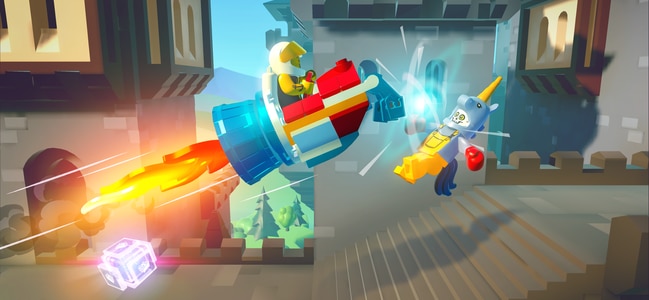Apple Arcade has entered the gaming subscription market
2019 has been a strong year for subscription services, and it’s been bolstered further thanks to the introduction of Apple Arcade.

Gaming
Don't miss out on the headlines from Gaming. Followed categories will be added to My News.
Let 2019 go down in history as the year we hit peak video streaming and subscription services. There are now so many streaming services, media companies have basically reinvented cable packages, without the convenience.
The same is almost true when it comes to gaming subscription services, but for now at least the choices of which services are worth the money are pretty obvious. If you’re an EA or Ubisoft fan, then subscribing to EA Origin (console and PC) or UPlay+ (PC only) are ways to access much of their back catalogues for a monthly fee (ranging from $7 for EA’s old games, to $20 for the EA games people actually want to play, or UPlay+), though Ubisoft’s games are peppered through some of the other services.

If you like a bit more variety in your publishers, then Xbox Game Pass is the best value of the console subscription services. It’s one of the things making Xbox the more attractive option for families with kids — PlayStation might have all the good exclusive games for young adults, but Xbox has cheap variety. At $11 a month for Xbox games or $16 a month for Xbox, PC and Xbox Live Gold, the subscription is a no-brainer for families who already have an Xbox but don’t want to commit to buying one $99 game every now and then when they could have 100+ games available to them at all times (and, if getting Ultimate, two free games to keep each month).
Now Apple Arcade has joined the subscription service party and it’s got the potential to make a huge impact on mobile gaming, as well as taking a chunk of that family subscription market, if people can be lured away from the free-to-play model with shiny graphics and actual stories.
For $7.99 a month, up to six linked family Apple IDs can access more than 100 games made just for the platform, with no ads or in-app purchases. It works now across all iPhones and iPods running iOS13, and tomorrow it’ll work on iPad OS and TV OS, with Mac compatibility coming in October when the new Mac OS launches.

In some ways, Apple Arcade was inevitable from the moment Google announced its Stadia streaming platform.
Stadia works on Google’s own devices as well. But, while everyone originally assumed it would be a subscription streaming service, it looks more like users will have to buy most of the games individually along with paying for a service that’s akin to Xbox Live Gold or PlayStation+ to play online and gain access two free games a month for $9.99US. However, unlike Apple’s more mobile offerings, Stadia will have fuller, longer, bigger games like Assassin’s Creed playable in Google Chrome browsers, which is an extremely attractive prospect.
The vast majority of Apple Arcade’s games are quite obviously mobile titles that can be played on a TV, rather than console games which can be played on your phone. They’re beautiful, brilliant mobile titles to be sure, and big-name publishers and brands like Sega, Capcom, Konami and Lego are on board, as well as local developers like Yak & Co and Blowfish Studios, and there is the potential for bigger adventures to come to the platform. But, for now at least, the slate of games is more firmly aimed at mobile casuals and families with kids, rather than trying to lure console gamers.
What was a surprise is that Apple, for the first time in forever, is the budget option. No-one saw that coming.

If you’re already an Apple user, $8 a month is a bargain. And it’s compatible with more (and better) third-party controllers. Just looking at Google’s much maligned Stadia controller is enough to induce RSI; in contrast, Apple has allowed support for PS4 and Xbox One S controllers with most Arcade-compatible devices.
Stadia is all about streaming the games to your device, requiring a stable and reliable NBN (which most don’t have) or much higher mobile data caps (which aren’t currently offered), while Apple Arcade lets users download the games to play, even in airplane mode.
The big challenge for Apple now is that they’re trying to get people to pay for something many are used to getting for free. Of course, free-to-play games are never actually free, what with the frequently intrusive ads and levels that are deliberately impossible in the hope of frustrating players into buying hints and power-ups with real money.
MORE: MADDEN NFL 20 ODDLY SATISFYING
CONTROL ISN’T GAME OF THE YEAR
SIMS 4 BRINGS YOUR INSECURITIES OUT
And these are the kinds of premium games that would normally set players back $5-$10. But for those who are able to resist the siren song of in-app-purchases, free is free.
However, since all of these services have at least one-month trials, there’s certainly no harm in auditioning all of them in succession to see which one works for you. As more are launched, you might even be able to squeeze out an entire free year.
Alice Clarke travelled to California as a guest of Apple.
Stephanie Bendixsen is on leave.


